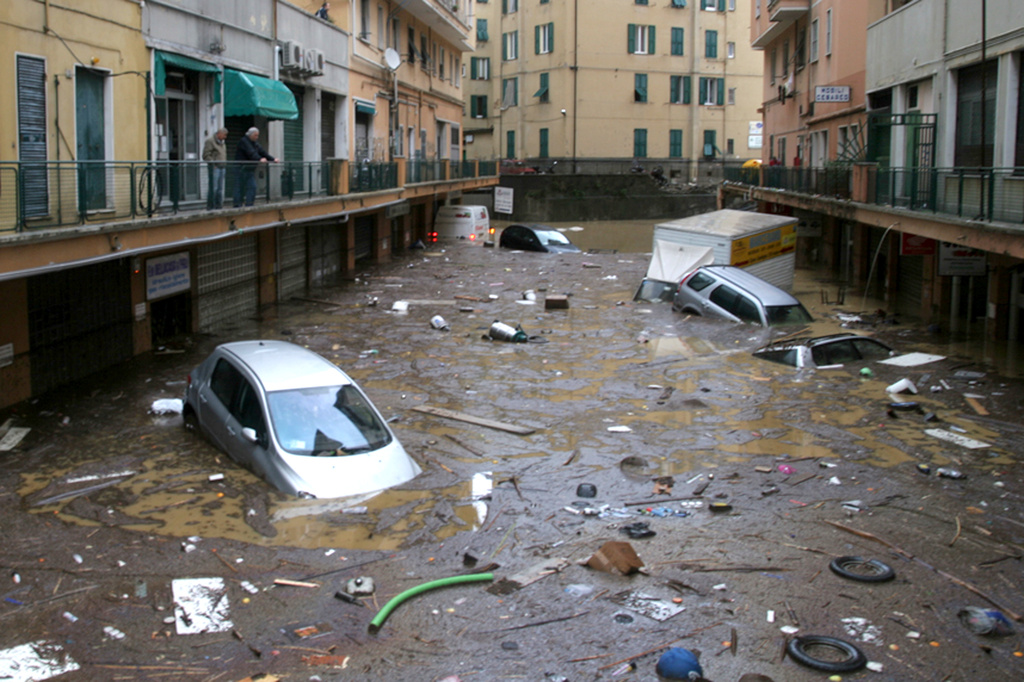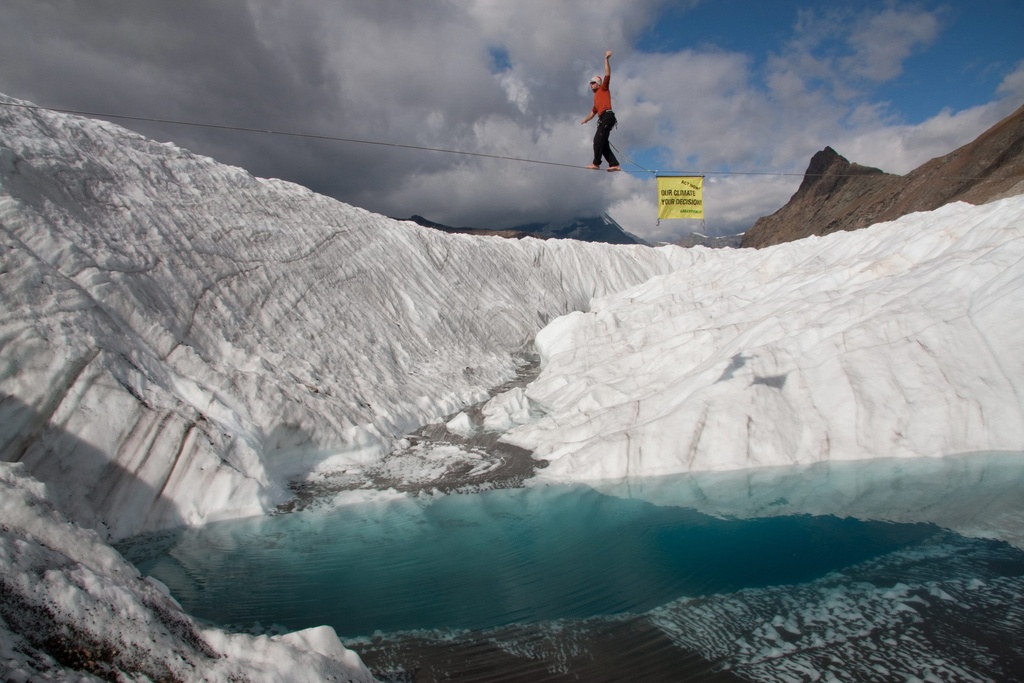Flooding of cities raises safety questions

How is it possible that today’s modern cities like Bangkok, Rome and Genoa can seem so defenceless against flooding?
According to Hans Hurni, director of the National Centre of Competence in Research (NCCR) North-South at Bern University, emergency planning is often overlooked during rapid growth of urban centres.
American doomsday prophet, Harold Camping, had predicted that the end of the world would come on October 21. Maybe there was some truth in his forecast.
Only two weeks later, the northern Italian city of Genoa experienced its “apocalypse”, as it was described in the Italian newspaper, Il Tempo. In little more than 12 hours, 350mm of rain fell on the main town of the Ligurian coast – a third of the total amount of annual precipitation. A deluge transformed streets in the Genoan centre into swollen rivers.
Pictures of a city submerged also came from Rome which was affected on October 20 by a violent storm. And then Bangkok. Whole districts of the Thai capital have become artificial lakes due to exceptional flooding.
Yet these catastrophic occurrences come as no surprise to Hurni. “These cities have been built at the foot of mountains or on plains close to the coast – obviously areas where flooding can’t be excluded,” Hurni told swissinfo.ch.
The problem with Genoa and Bangkok, Hurni adds, is the same for all cities that have grown rapidly over the past few decades. “Safety issues have not been taken into account during their development.”
Growing pains
Cities used to be built in secure places. “Bangkok began on elevated terrain while there used to be some distance between Genoa and its rivers. When the cities were enlarged, buildings and roads were built in risk zones.”
“Most European towns have adopted measures to prevent flooding, such as increasing the depth of rivers and lakes and erecting levees, which were not conceived only for exceptional events.”
Hurni adds that the first thing to be done to limit damage from extreme weather events – which could increase in future – is to avoid building in high-risk areas. He also supports the implementation of early warning systems.
“People must leave areas at risk as soon as possible, which did not happen in Genoa.” Inhabitants must also be aware of escape routes within the buildings where they live.
Switzerland is not immune to natural disasters, and therefore also has a need to protect itself. In 1993, the River Saltina overflowed its banks and flooded the town of Brig. Two died as a result and the damage was estimated at more than SFr600 million.
Lift bridges
“The entire system to protect against flooding didn’t work,” recalled Hurni. “An early warning system was introduced after this disaster, and lift bridges constructed.”
The main bridge over the Saltina automatically adjusts its height to the water level, preventing detritus like logs and branches from damming the water. The entire bridge can be raised by up to three metres in a matter of minutes.
And the town’s old footbridges were replaced with ones that, if necessary, can be disassembled quickly. The modern structures were put to the test in 2000 when the volume of water transported by the river exceeded 1993 levels. Damage was limited thanks to the new system.
However in the meantime, other Swiss towns have been severely affected by flooding. “I’m not sure that all Swiss towns are sufficiently protected. We are not always prepared to face potential dangers,” Hurni said.
The village of Brienz in the Bernese Alps is the best example. “They had been building in the alluvial cone of mountain streams for more than a century. The result was disastrous: numerous houses were swept away in the 2005 floods.”
But Hurni doesn’t believe in miracles. “Whether we move buildings out of danger zones or reinforce the flood containment structures, it’s impossible to eliminate all risks. Maybe we should begin to learn to live with disasters.”
In the case of extreme weather or serious earthquakes, the National Alarm Centre sends the alerts of the Swiss Meteorological Office or the Swiss Seismological Service to the affected cantons, the army, the Federal Police Office and other parties.
The alert to the population is communicated by the 7,750 sirens spread across the country and normally operated by the cantonal police.
The population is then supposed to tune in to the radio stations of the Swiss Broadcasting Corporation for information.
Because of Switzerland’s federal system, federal authorities are only supposed to act in a support capacity in the case of a natural disaster.
The Civil Protection Office oversees everything to do with intervention on the ground.
The Federal Water and Geology Office is responsible for prevention.
(Translated from Italian by Dale Bechtel)

In compliance with the JTI standards
More: SWI swissinfo.ch certified by the Journalism Trust Initiative















You can find an overview of ongoing debates with our journalists here . Please join us!
If you want to start a conversation about a topic raised in this article or want to report factual errors, email us at english@swissinfo.ch.